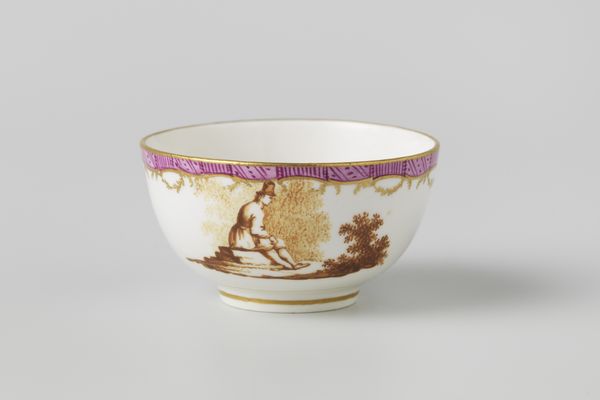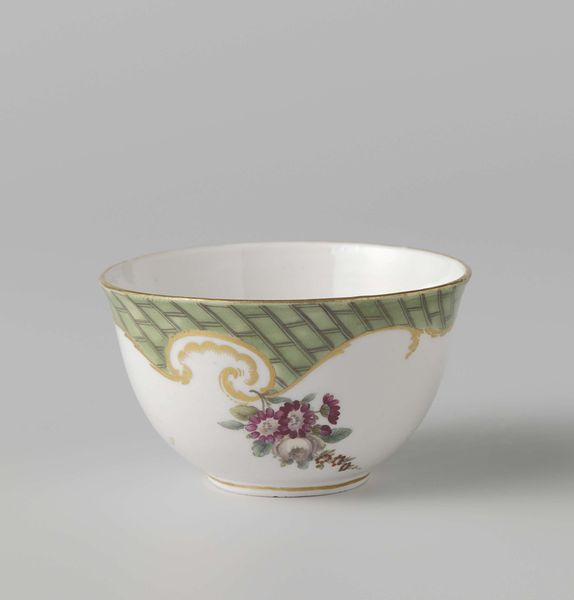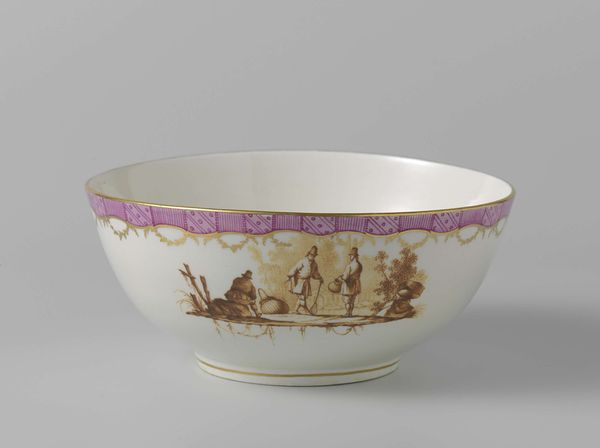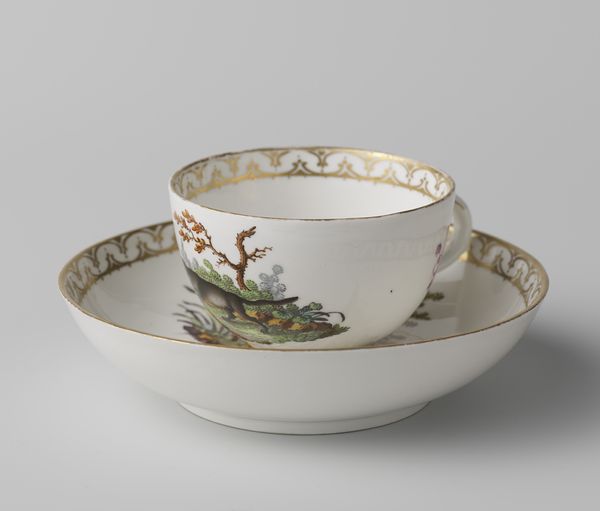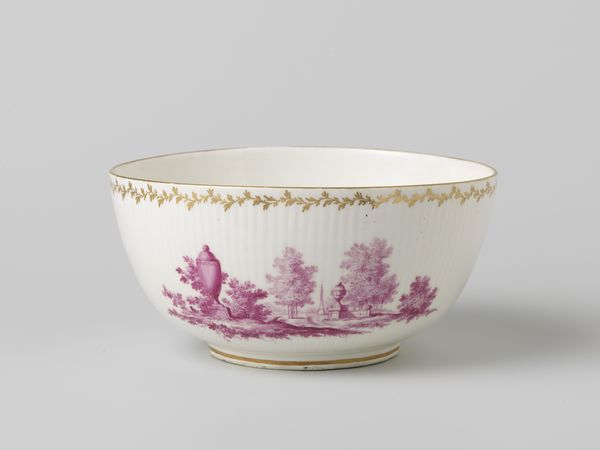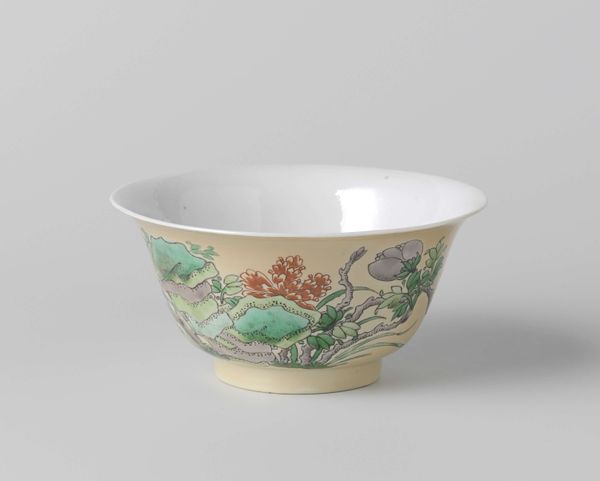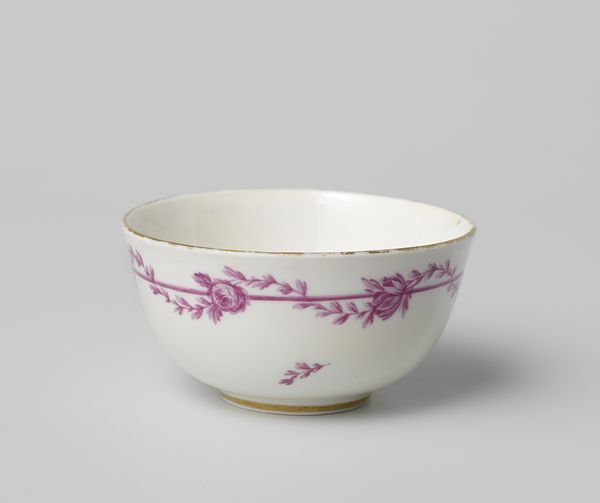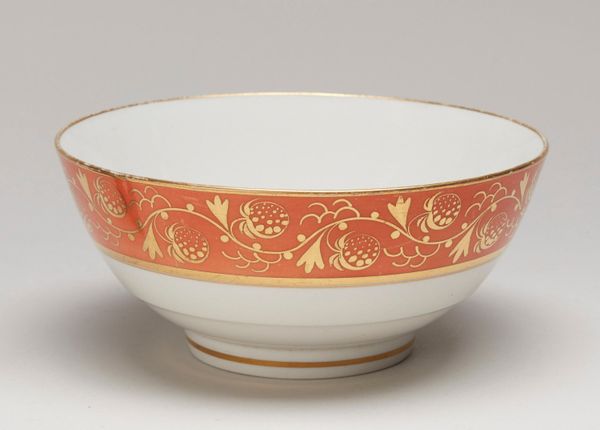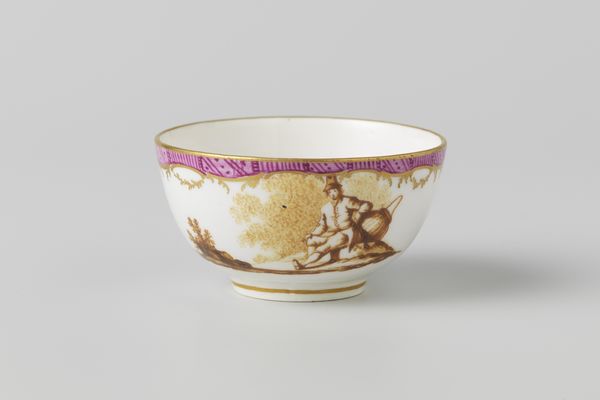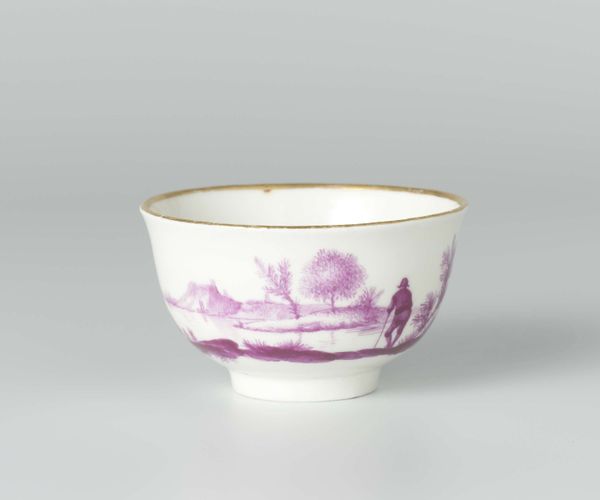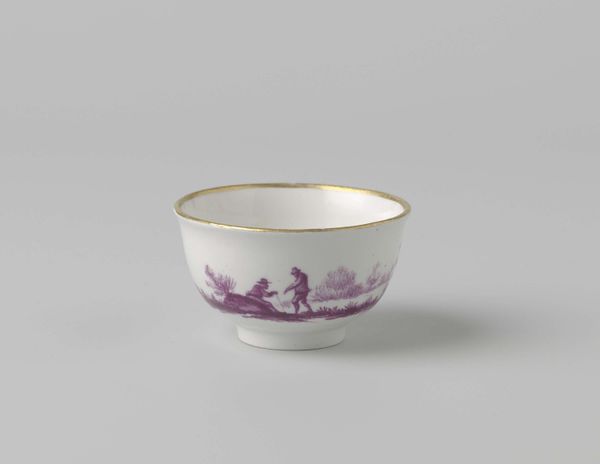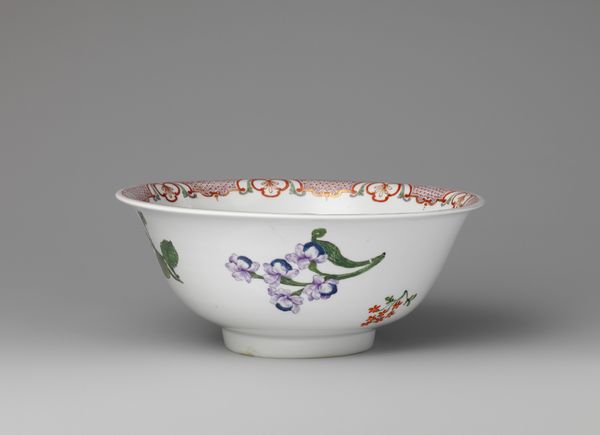
Dimensions: height 3.8 cm, diameter 6.8 cm
Copyright: Rijks Museum: Open Domain
This porcelain tea service was crafted in Loosdrecht and resides in the Rijksmuseum. Notice the lone figure painted on its side: a seated man with a walking stick. This motif of a solitary figure in repose carries echoes of classical antiquity, reminiscent of philosophers and shepherds contemplating the world. Yet, it also carries the weight of melancholy, a figure isolated in thought, much like the "penseroso" archetype that has recurred throughout art history. We can observe this archetype reflected in many works throughout time, from medieval depictions of hermits to romantic portrayals of wanderers by artists like Caspar David Friedrich. The stick he holds can be seen as a signifier of power and authority, but also as a symbol of support and guidance through life's journey. Its presence evokes a deep, subconscious connection to notions of resilience, and purpose. The image resonates with a sense of introspection that touches on the human condition. Like a pendulum, the solitary man appears again and again, each time subtly altered by the cultural milieu. This cultural memory is not linear but cyclical.
Comments
rijksmuseum about 2 years ago
⋮
Tea services represented a significant part of the production of the Loosdrecht porcelain factory. On display here are a teapot, milk jug and sugar bowl along with other less familiar parts of a tea service, such as a slop bowl, which is used to rinse and warm the cups between two ‘courses’, and a drip catcher (pattipan), which catches the drips from the spout of the teapot.
Join the conversation
Join millions of artists and users on Artera today and experience the ultimate creative platform.
